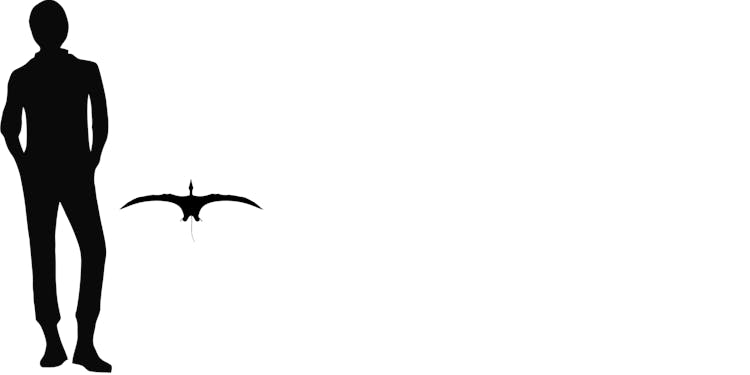


In 1986, Professor Corrado Rosenfeld found a beautifully preserved pterosaur skeleton in rocky debris at the base of a cliff in northeastern Italy. The specimen was found to be a new species of Late Triassic pterosaur, and was named Eudimorphodon rosenfeldi by Fabio Marco Dalla Vecchia in 1995. In 2009, Dalla Vecchia published a thorough description of E. rosenfeldi, comparing it to other specimens of Eudimorphodon and other eudimorphodontids. He found that although it was a eudimorphodontid, it was not particularly close to the other species of Eudimorphodon, and gave it the genus name Carniadactylus. The 2009 paper also described a second, smaller specimen of Carniadactylus, although Alexander Kellner gave the second specimen its own genus and species, Bergamodactylus wildi in 2015 citing its smaller size but similar age at death. The name Carniadactylus rosenfedli honors the Carnia region of Italy and Professor Rosenfeld.
The specimen is on a rock slab and is made up of most of an articulated skeleton of a small, pterosaur lying on its side. The skeleton is missing most of its head, some neck vertebrae, some limb bones, and the tail. The rear portion of the skull and mandible are present, and a single tooth at the back of the lower jaw with impressions of a few others. Like other eudimorphodontids, the teeth are somewhat bladelike and have five cusps.
The specimen’s wings are well preserved and folded, and preserve fibers, known as actinofibrils that stiffened distal the wing membrane. Although the tail was not found, its early appearance and certain skeletal characteristics show that Carniadactylus had a long tail. Like all early long-tailed pterosaurs, Carniadactylus had a comparatively short neck, short hand bones, and a long, divergent fifth toe. Its wingspan was 71 cm (28 inches), about the same size as a magpie.
When Dalla Vecchia initially described Eudimorphodon rosenfeldi in 1995, there were very few species of pterosaurs with multi-cusped teeth, and it was most similar to Eudimorphodon ranzi, also known from Triassic rocks in northern Italy. Between its initial naming in 1995 and full description in 2009, several other species of eudimorphodontids were discovered. Dalla Vecchia performed a phylogenetic analysis, and found that E. rosenfeldi was actually more closely related to Caviramus and Raeticodactylus than it was to Eudimorphodon hence the new genus name. Dalla Vecchia also found the Early Jurassic pterosaur Campylognathoides to be a close relative of the eudimorphodontids. Other analyses, such as a 2018 analysis by Nick Longrich and colleagues found that the eudimorphodontids are part of a strictly Triassic lineage called the eopterosaurs, and that Campylognathoides was more closely related to later pterosaurs.
Carniadactylus lived about 215 million years ago near the northern shore of the ancient Tethys Ocean. Eudimorphodontids had complex multi-cusped teeth that allowed a certain degree of chewing, something rarely seen in pterosaurs. In 2011 Attila Ősi determined that eudimorphodontids were largely insectivorous by comparing their teeth to the teeth in modern lizards. Smaller bodied eudimorphodontids like Carniadactylus may have focused on smaller or softer-bodied prey like worms or grubs.
